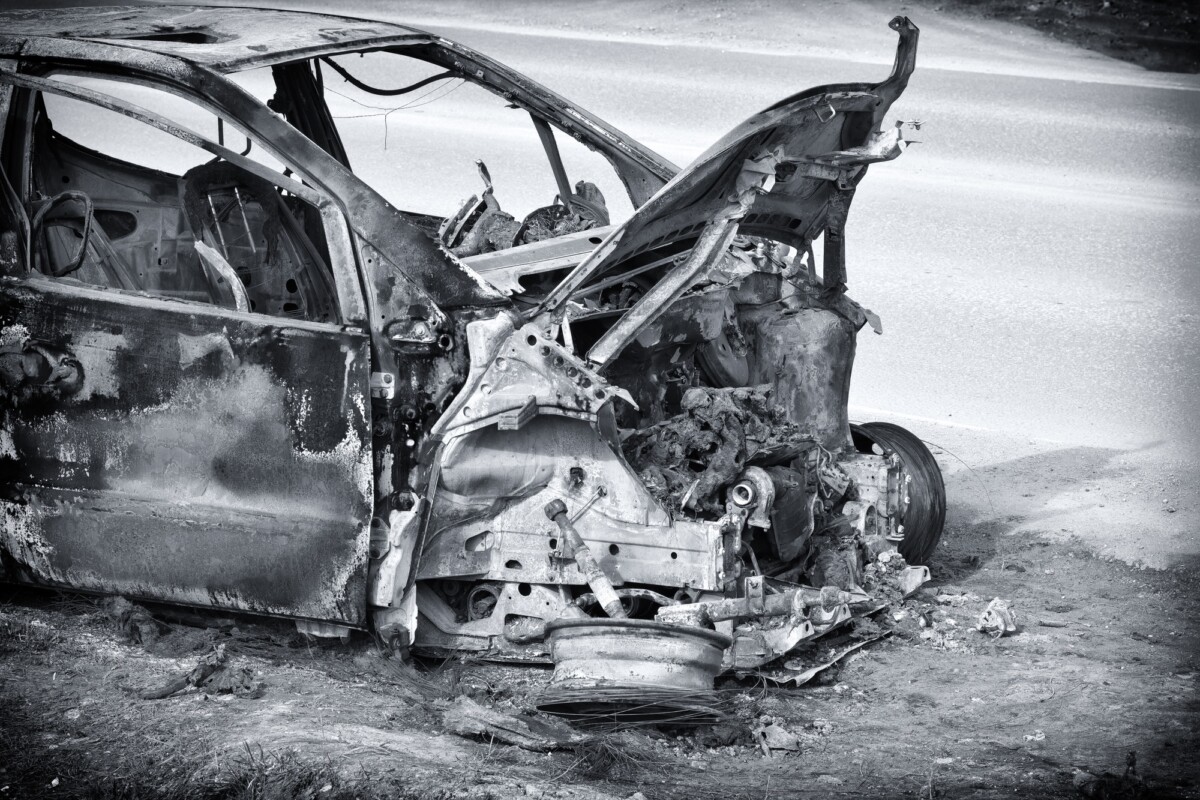Personal Injury vs Property Damage: Protect Your Rights Today

Understanding the distinction between personal injury and property damage is crucial in navigating accidents and legal claims. These terms refer to different types of harm, impacting liability and compensation discussions. This section explores the nuances of personal injury vs property damage, highlighting their significance in legal claims.
Understanding Personal Injury and Property Damage
What is Personal Injury?
Definition: Personal injury involves physical or psychological harm caused by someone else’s negligence or intentional actions, such as in car accidents or medical malpractice.
Key Points:
- Claims often seek compensation for medical expenses, lost wages, and pain and suffering.
- Unintentional injuries are the third leading cause of death in the U.S., according to the National Safety Council.
- Emotional distress can complicate personal injury claims.
What is Property Damage?
Definition: Property damage refers to harm or destruction of physical property, focusing on repair or replacement costs.
Key Points:
- Claims can arise from incidents like car accidents or vandalism.
- Property damage claims represent a significant portion of insurance payouts, as reported by the Insurance Information Institute.
- These claims typically do not include compensation for pain and suffering, making them simpler to resolve.
Comparing Personal Injury and Property Damage
Understanding the Differences: Identifying the correct claim type is essential for legal action. Personal injury focuses on individuals, while property damage pertains to physical assets, with differing compensation types and legal complexities.
Key Differences Between Personal Injury and Property Damage
Understanding the distinction between personal injury and property damage is crucial for navigating legal claims related to accidents and liability. These terms refer to different types of harm, and knowing the key differences can help individuals assert their rights effectively, especially when dealing with insurance companies or legal representatives.
Definition of Personal Injury
- Personal injury involves physical or psychological harm due to someone else’s negligence or intentional actions, including injuries from car accidents, slips and falls, and medical malpractice.
- Victims may seek compensation for medical expenses, lost wages, pain and suffering, and emotional distress.
In 2020, there were approximately 4.8 million medically consulted injuries in the U.S., underscoring the prevalence of personal injury cases.
Definition of Property Damage
- Property damage refers to harm inflicted on a person’s property, such as vehicles or homes, typically involving compensation for repair costs or replacement value.
- Examples include damage from car accidents or natural disasters.
The focus here is on the financial loss incurred due to the damage, with property damage claims accounting for a significant portion of insurance claims in 2021.
Legal Implications
- The legal processes for these claims differ; personal injury claims often require proving negligence, while property damage claims focus on the extent of damage.
- Understanding these differences is essential for anyone considering a claim, as it influences the approach and resources needed to pursue justice.
Common Causes of Personal Injury and Property Damage
In legal discussions surrounding accidents, the terms ‘personal injury’ and ‘property damage’ are frequently mentioned. Understanding the difference between personal injury vs property damage is essential for navigating insurance claims and legal actions. Personal injury refers to harm to individuals, while property damage pertains to harm to physical possessions. Both can arise from similar incidents but carry different legal implications.
Accidents can lead to both personal injury and property damage, and recognizing common causes can help individuals take preventive measures.
Motor Vehicle Accidents
- Statistics: Over 38,000 people died in motor vehicle crashes in 2020 (NHTSA).
- Impact: These accidents can cause serious injuries and significant property damage.
Motor vehicle accidents are a leading cause of both personal injury and property damage, affecting drivers and passengers alike.
Slip and Fall Incidents
- Statistics: Falls are the leading cause of injury-related deaths among older adults (CDC).
- Impact: These incidents can lead to personal injuries and property damage.
Workplace Accidents
- Statistics: In 2020, there were 4,764 fatal work injuries in the U.S. (OSHA).
- Impact: Workplace accidents can cause serious injuries and property damage.
Natural Disasters
- Statistics: The U.S. experienced 22 billion-dollar weather disasters in 2020 (NOAA).
- Impact: Natural disasters can lead to extensive property damage and personal injuries.
Legal Implications of Personal Injury vs Property Damage
Understanding the distinction between personal injury vs property damage is crucial in legal matters, especially in accident claims where they often overlap. Personal injury refers to harm inflicted on a person’s body, mind, or emotions, while property damage involves the destruction of physical possessions. This knowledge can significantly impact the outcome of a case.
Personal Injury Claims
- Definition: Claims arise when an individual suffers harm due to someone else’s negligence.
- Compensation: Victims can seek compensation for medical expenses, lost wages, and emotional distress. In 2020, unintentional injuries accounted for over 200,000 deaths in the U.S.
Property Damage Claims
- Definition: These claims involve costs for repairing or replacing damaged items.
- Compensation: Claimants can recover repair costs and sometimes loss of use. In 2020, property damage claims resulted in approximately $25 billion in payouts.
Key Differences
- Nature of Claim: Personal injury focuses on harm, while property damage focuses on material losses.
- Evidence Required: Personal injury requires medical documentation; property damage needs repair estimates.
Understanding these legal implications is essential for anyone involved in an accident, as it can influence the claims process and potential outcomes.
Statistics on Personal Injury and Property Damage Claims
Understanding the differences between personal injury and property damage claims is essential in navigating legal matters. Personal injury claims address physical and emotional harm to individuals, while property damage claims focus on the loss or damage to physical property. Statistics can shed light on the prevalence and implications of these claims.
Overview of Claims Statistics
Personal Injury Claims
- The National Highway Traffic Safety Administration (NHTSA) reported about 4.4 million medically consulted injuries in the U.S. from motor vehicle accidents in 2020.
- Average settlements for personal injury claims range from $3,000 to $75,000, depending on injury severity and circumstances.
These statistics underscore the significant impact of personal injuries and the importance of knowing one’s rights.
Property Damage Claims
- The Insurance Information Institute (III) noted that property damage claims made up around 50% of all insurance claims in 2021, with an average payout of $3,500.
- In 2020, property damage from natural disasters in the U.S. exceeded $95 billion, highlighting the financial risks involved.
Conclusion
In conclusion, both personal injury and property damage claims are prevalent and can have serious consequences. Understanding these statistics can help individuals make informed decisions regarding their legal options and potential compensation.
How to Navigate Claims for Personal Injury and Property Damage
Understanding the distinction between personal injury and property damage is essential after an accident. Personal injury involves physical or emotional harm to an individual, while property damage refers to harm done to belongings. Navigating claims for both can significantly affect your compensation and case outcome.
Understanding the Claims Process
To effectively navigate claims, follow these steps:
1. Gather Evidence
- Take photos of the accident scene.
- Collect witness statements.
- Keep records of medical treatments and expenses.
- Document property damage with detailed descriptions.
2. Report the Incident
- Notify your insurance company promptly.
- File a police report if necessary.
- Inform all parties about the claim process.
3. Consult with Professionals
- Consider hiring a personal injury attorney.
- Speak with a property damage adjuster.
- Understand the legal implications of your claims.
- Seek medical advice for injuries sustained.
Key Considerations
Keep these factors in mind when filing claims:
- Statute of Limitations: Each state has a specific timeframe for filing claims, ranging from one to six years for personal injury.
- Insurance Coverage: Know your policy limits, as some may cover personal injury but not property damage.
- Negotiation Skills: Be ready to negotiate with insurance companies, as initial offers may be lower than deserved.
By following these steps and understanding personal injury vs property damage, you can enhance your chances of receiving fair compensation.
FAQs
What is the difference between damage and injury?
Injury refers to harm to a person’s body or health, while damage typically refers to harm or destruction to property or belongings.
What is the definition of personal injury and property damage?
Personal injury means physical or emotional harm to a person. Property damage means physical damage or loss to personal or real property.
What is personal injury and property damage insurance?
These are types of insurance coverage that protect against claims for bodily harm (personal injury) and damage to property caused by accidents or negligence.
What qualifies as property damage?
Property damage includes destruction or harm to physical property such as vehicles, buildings, equipment, or personal items.
Final Thoughts
Understanding the difference between personal injury and property damage is key for handling insurance claims and legal matters. While both involve harm caused by accidents, they affect different areas—people versus property—and require different approaches for compensation and coverage.
Get the justice you deserve—start with a free case review at LegalCaseReview.com or call 📞 (833) 279-1850!



